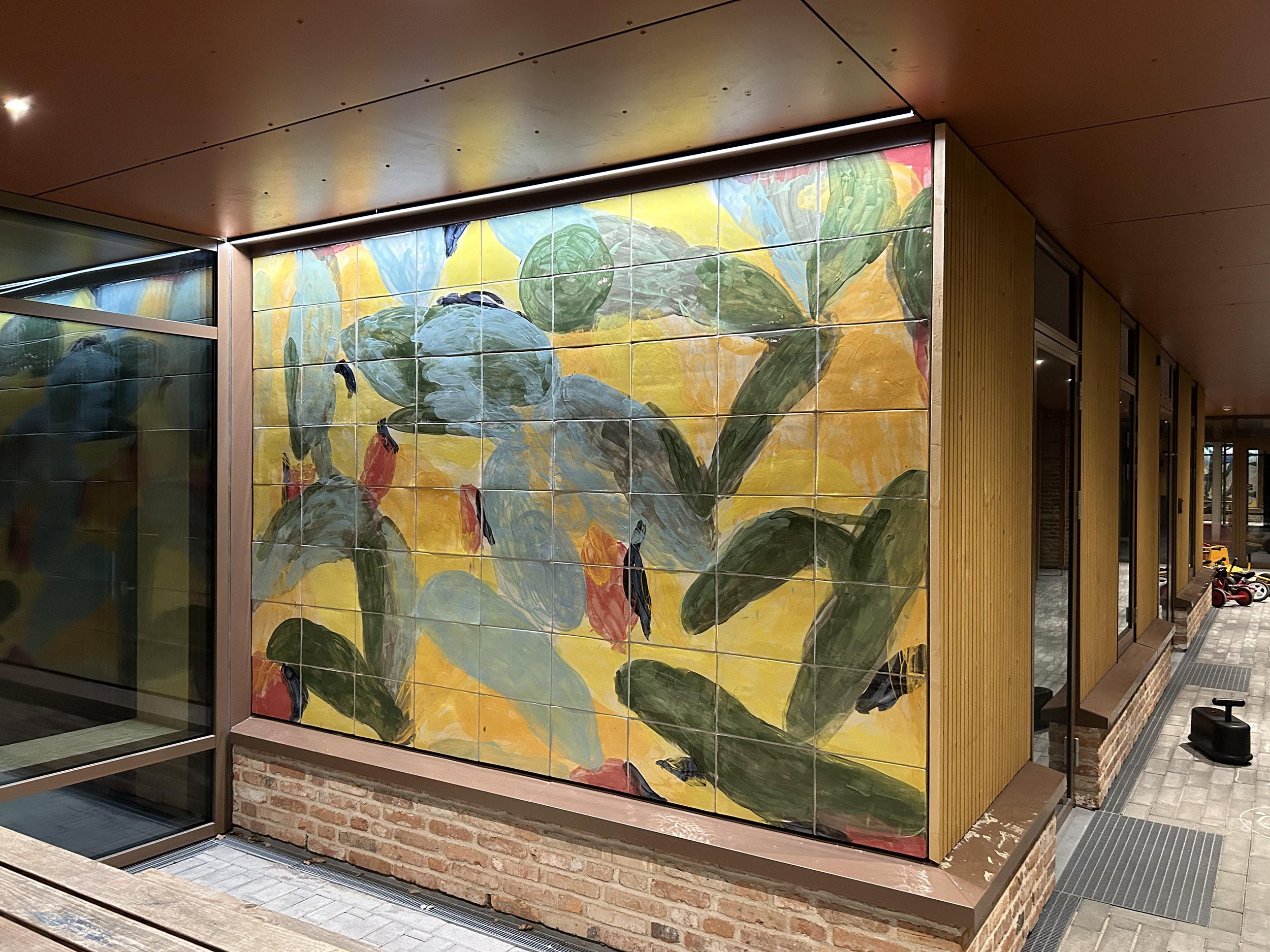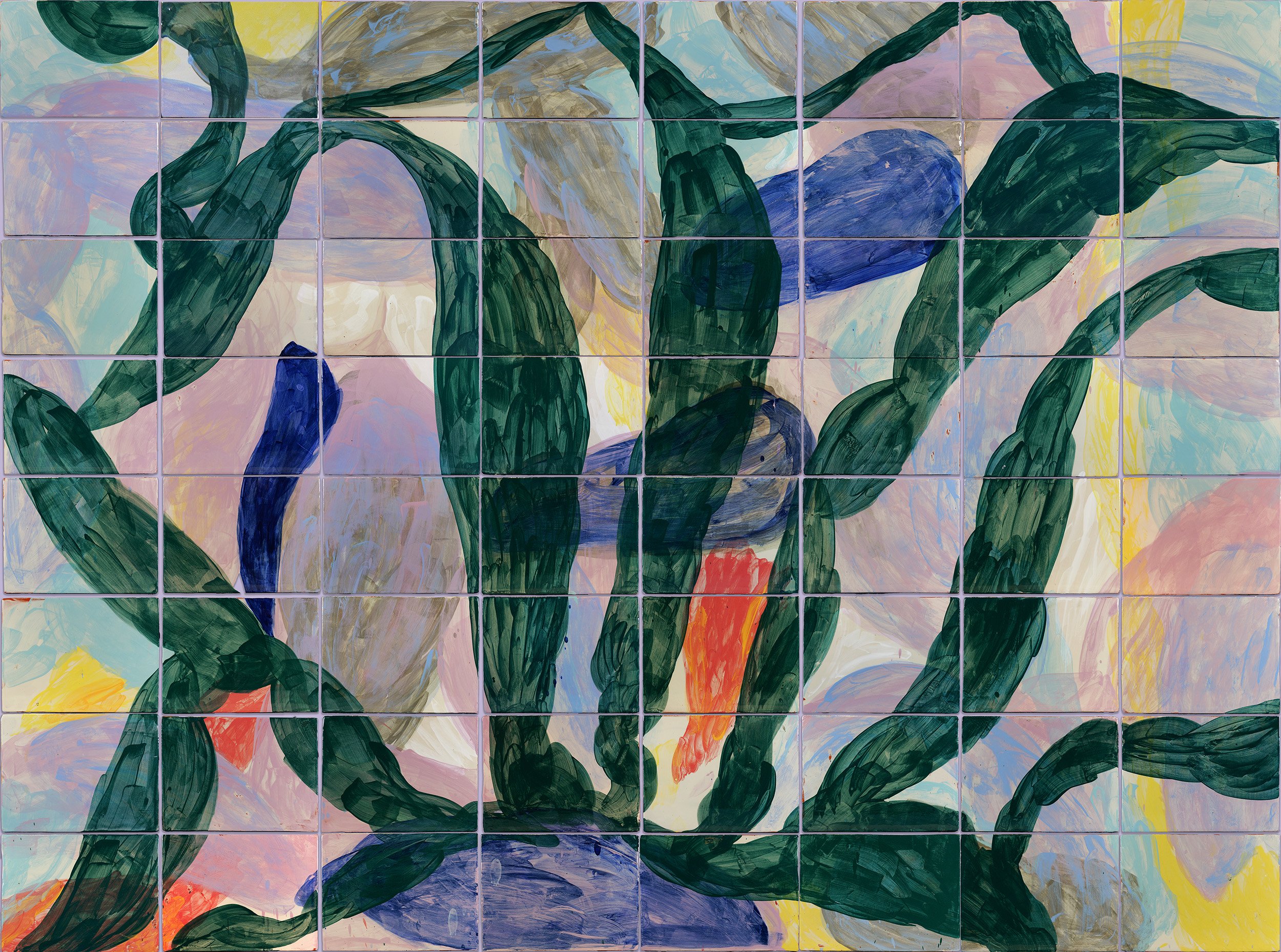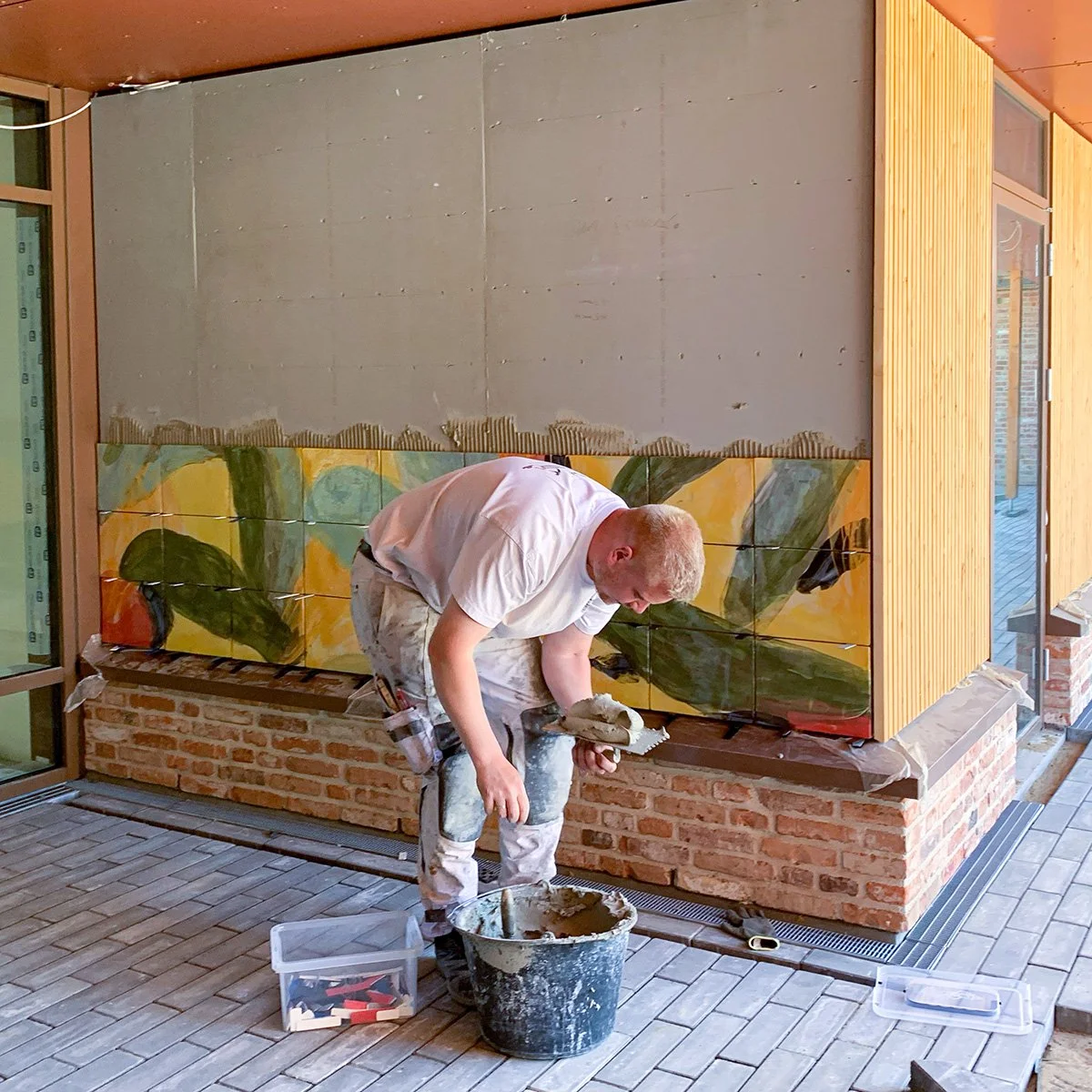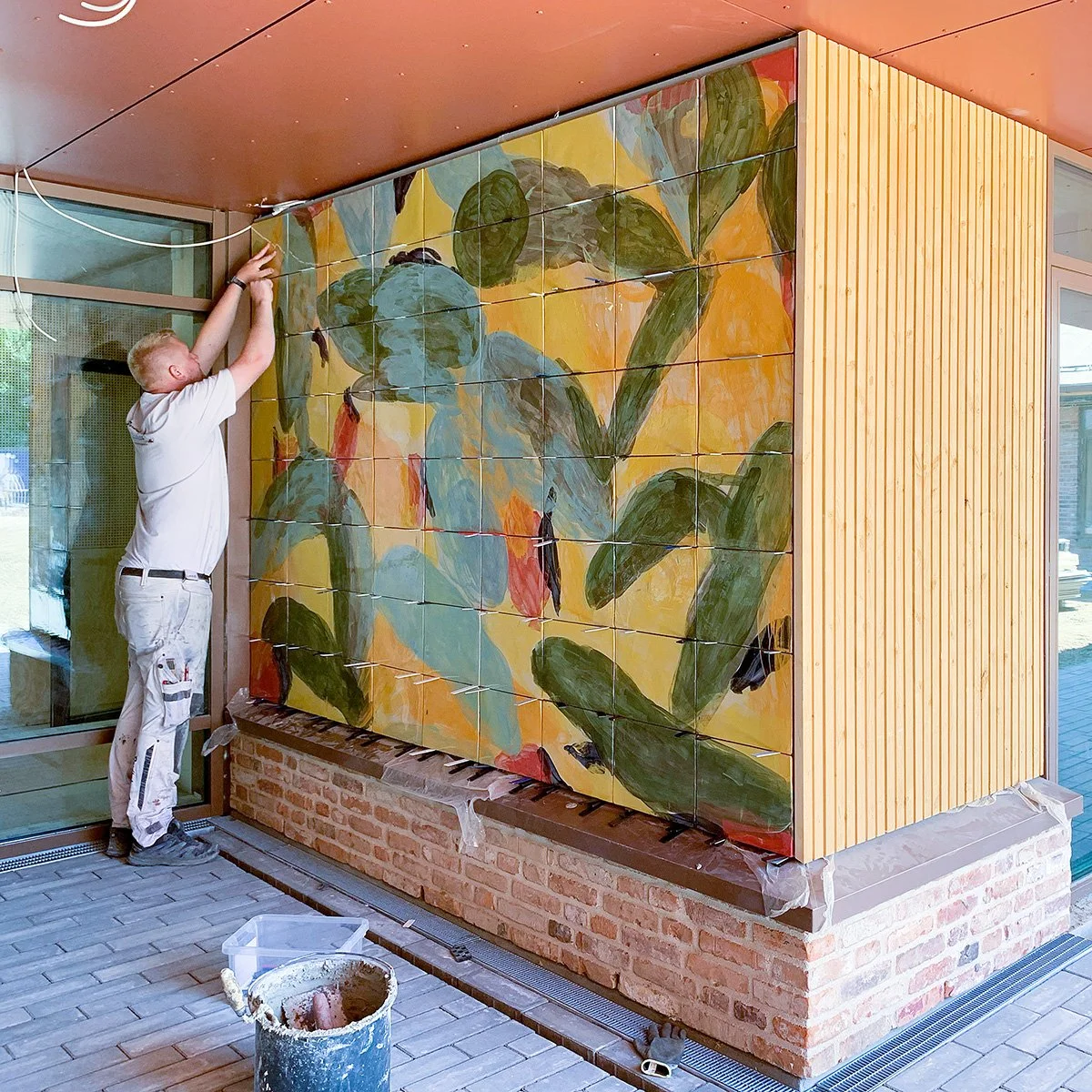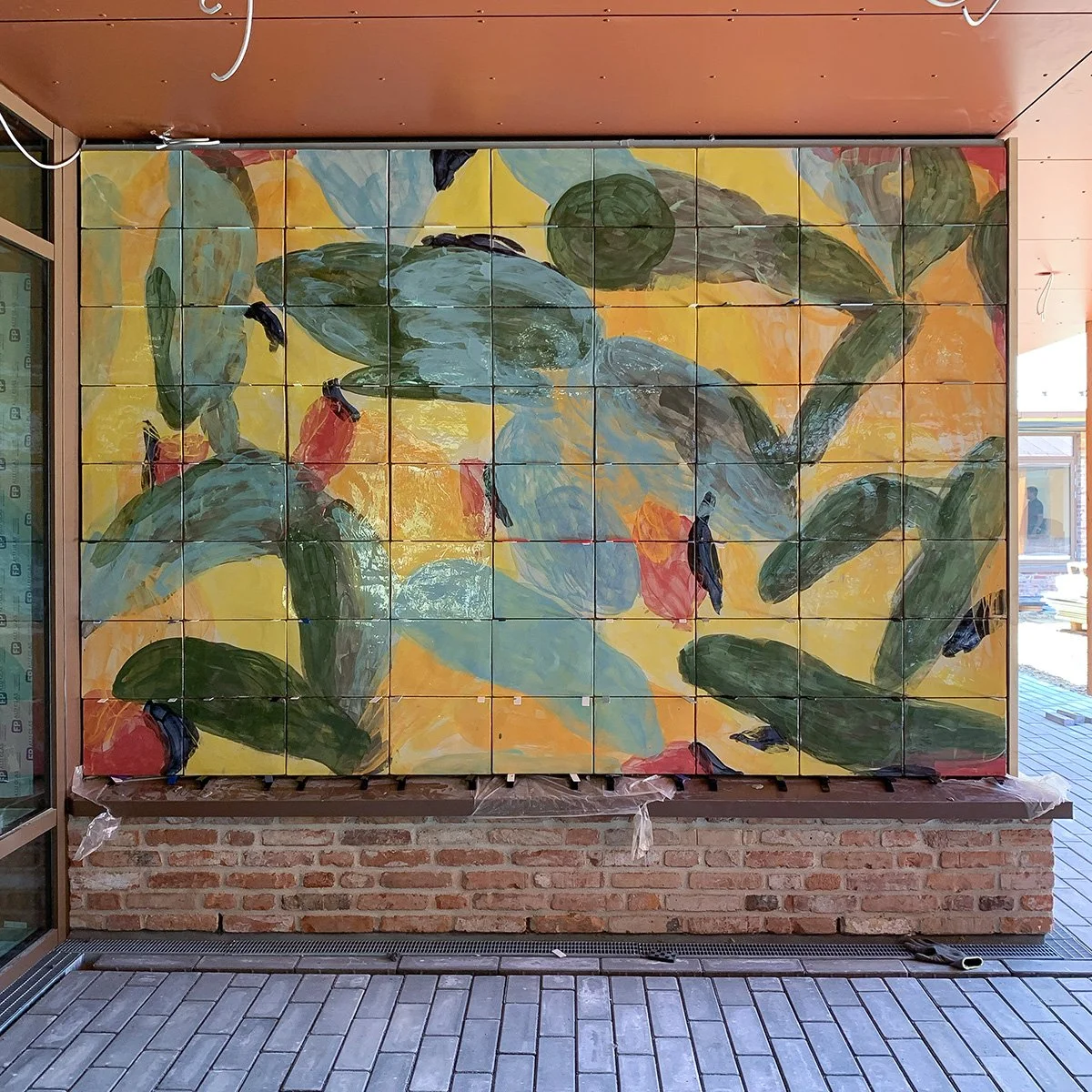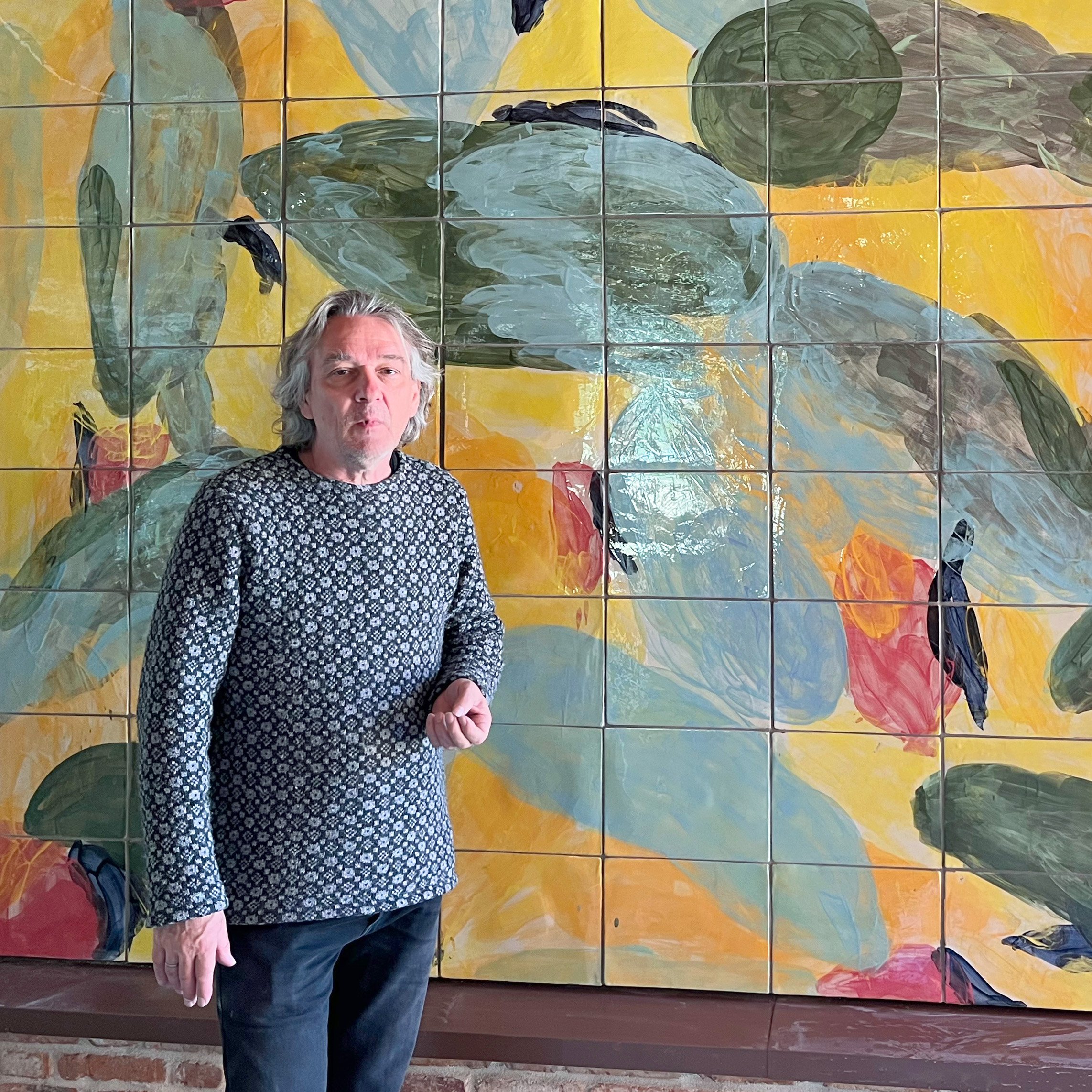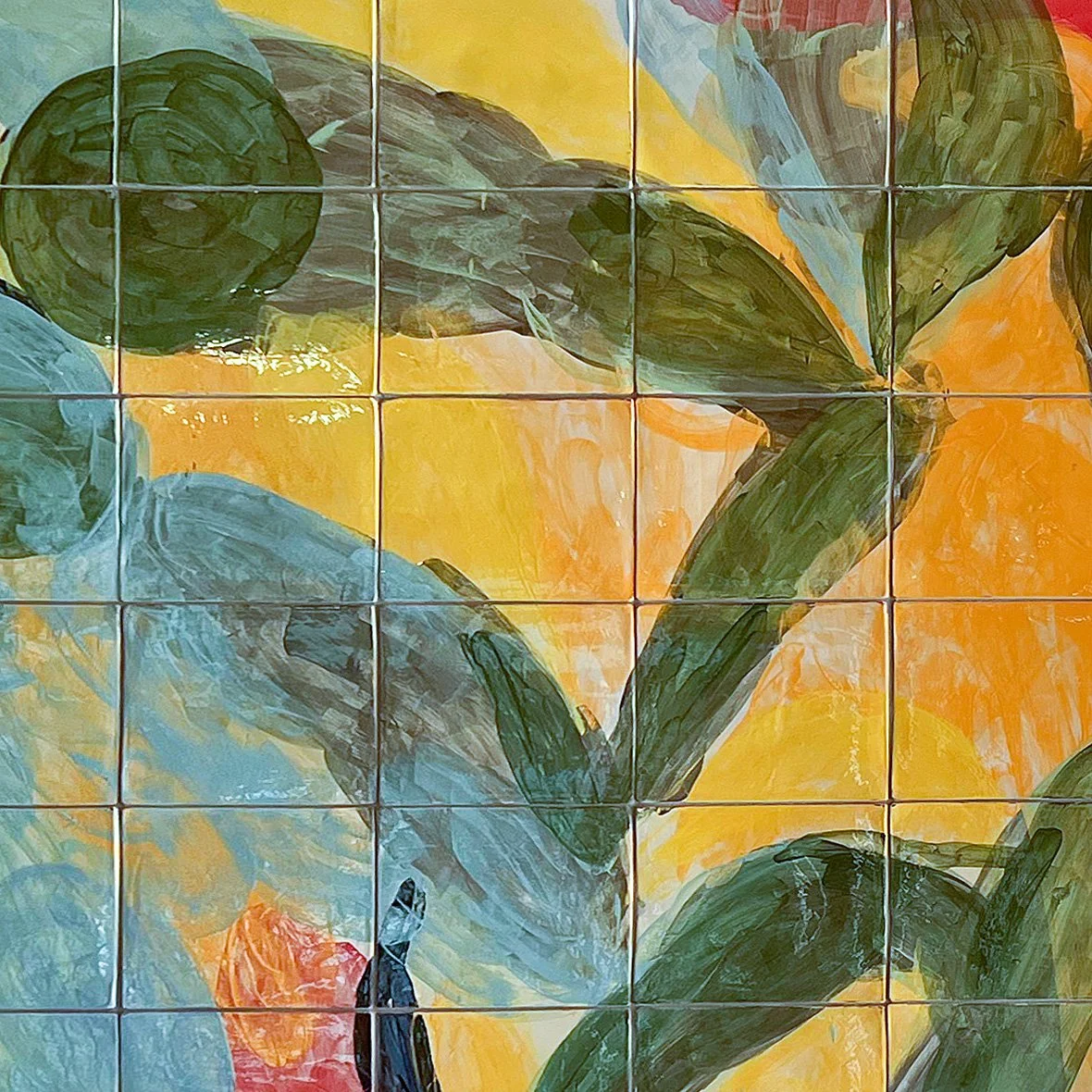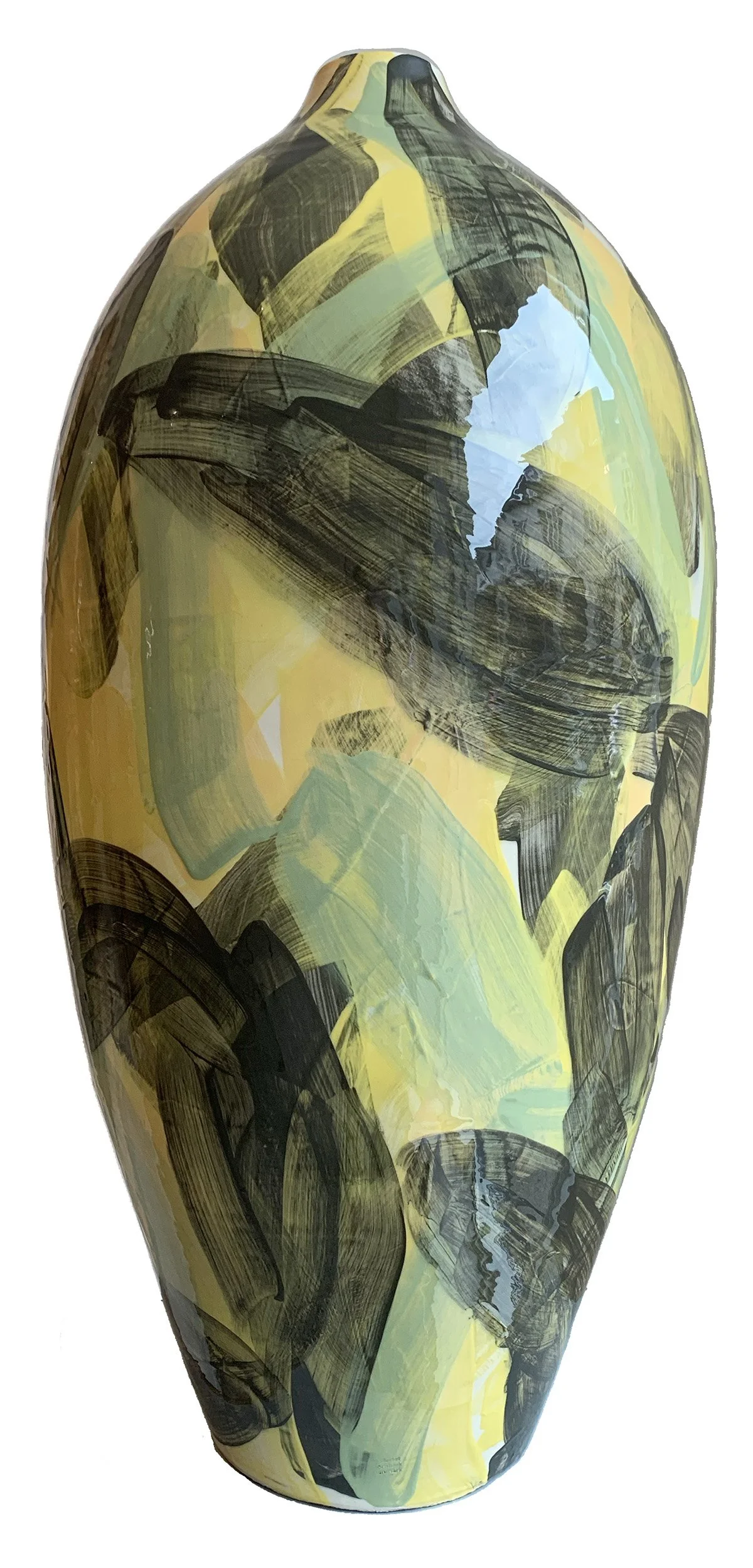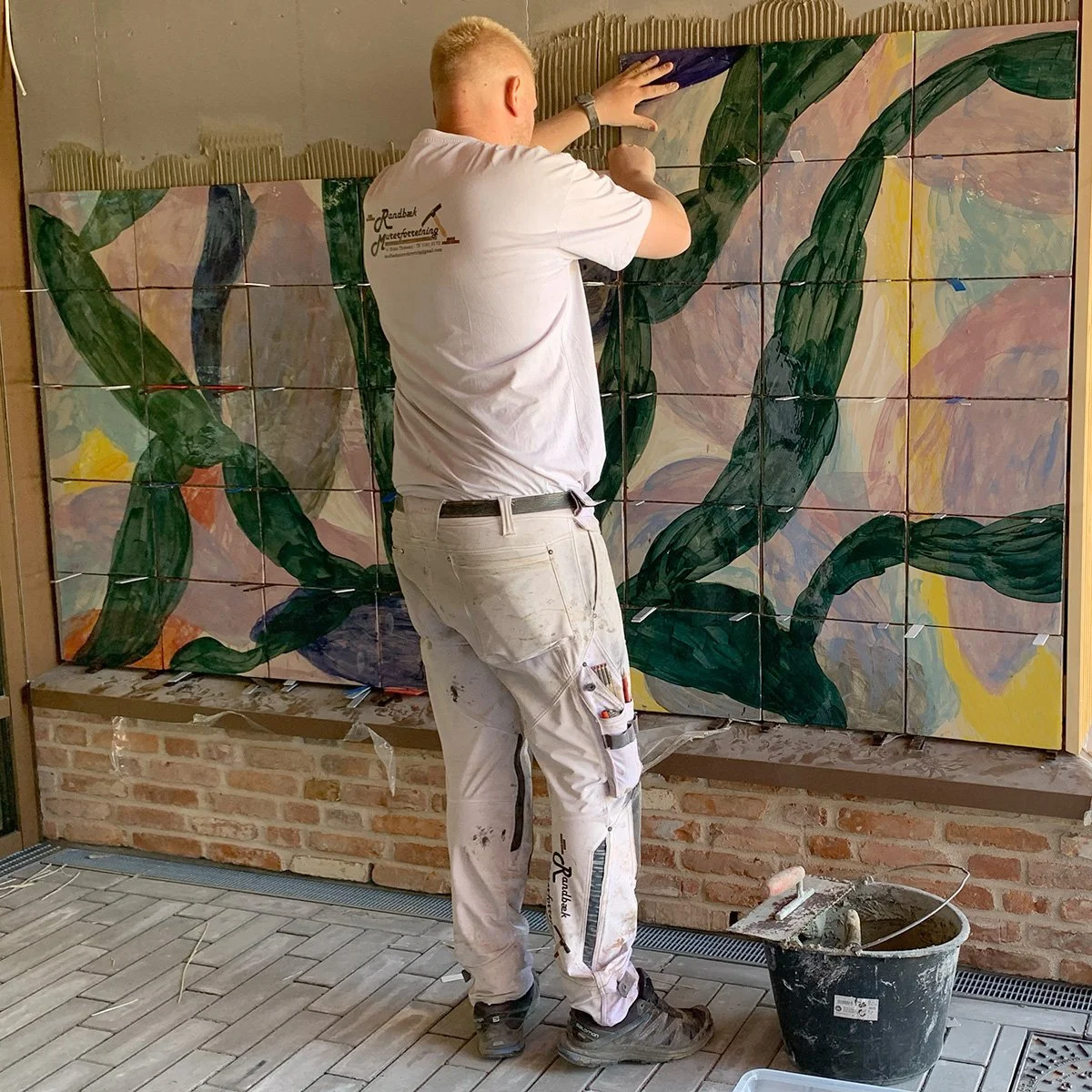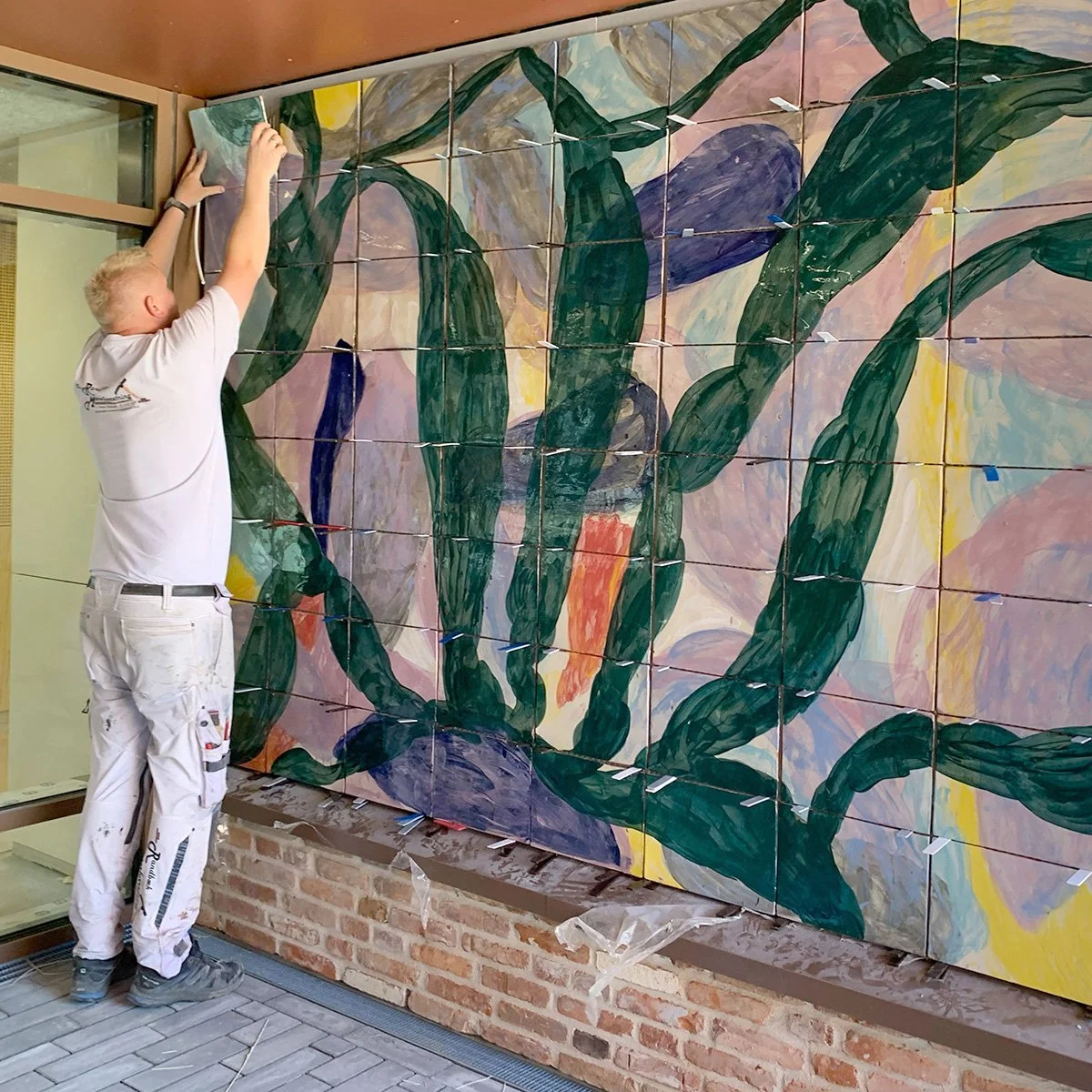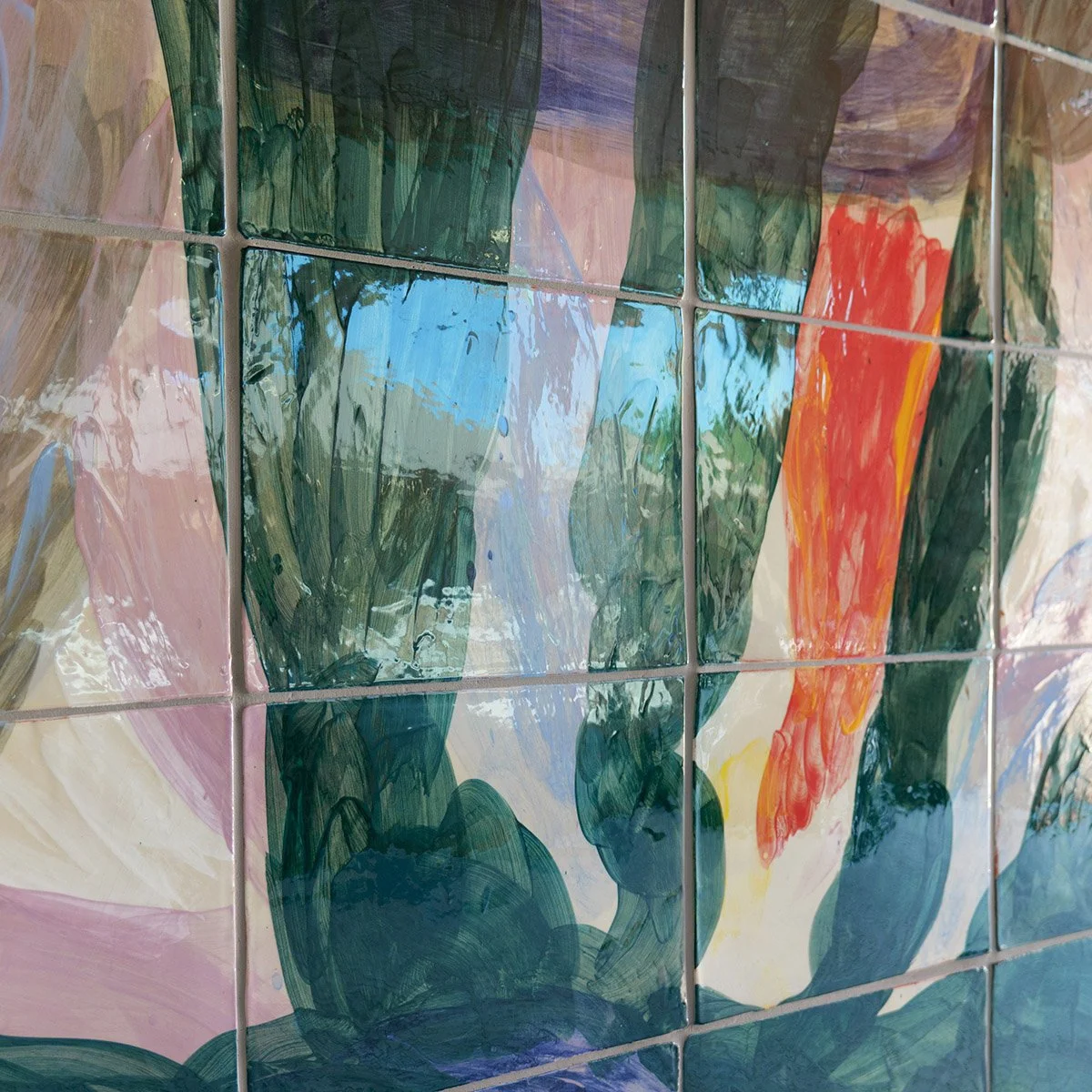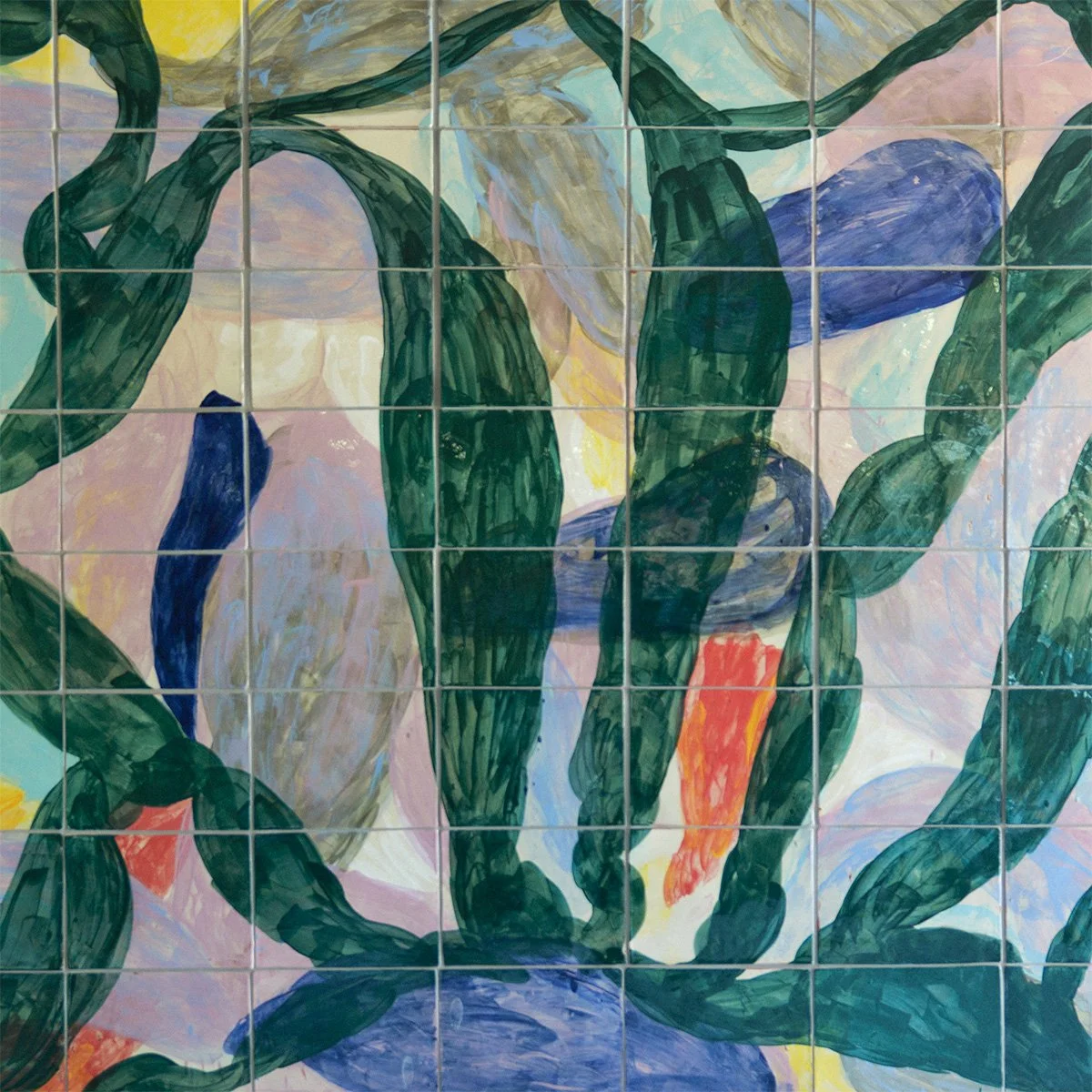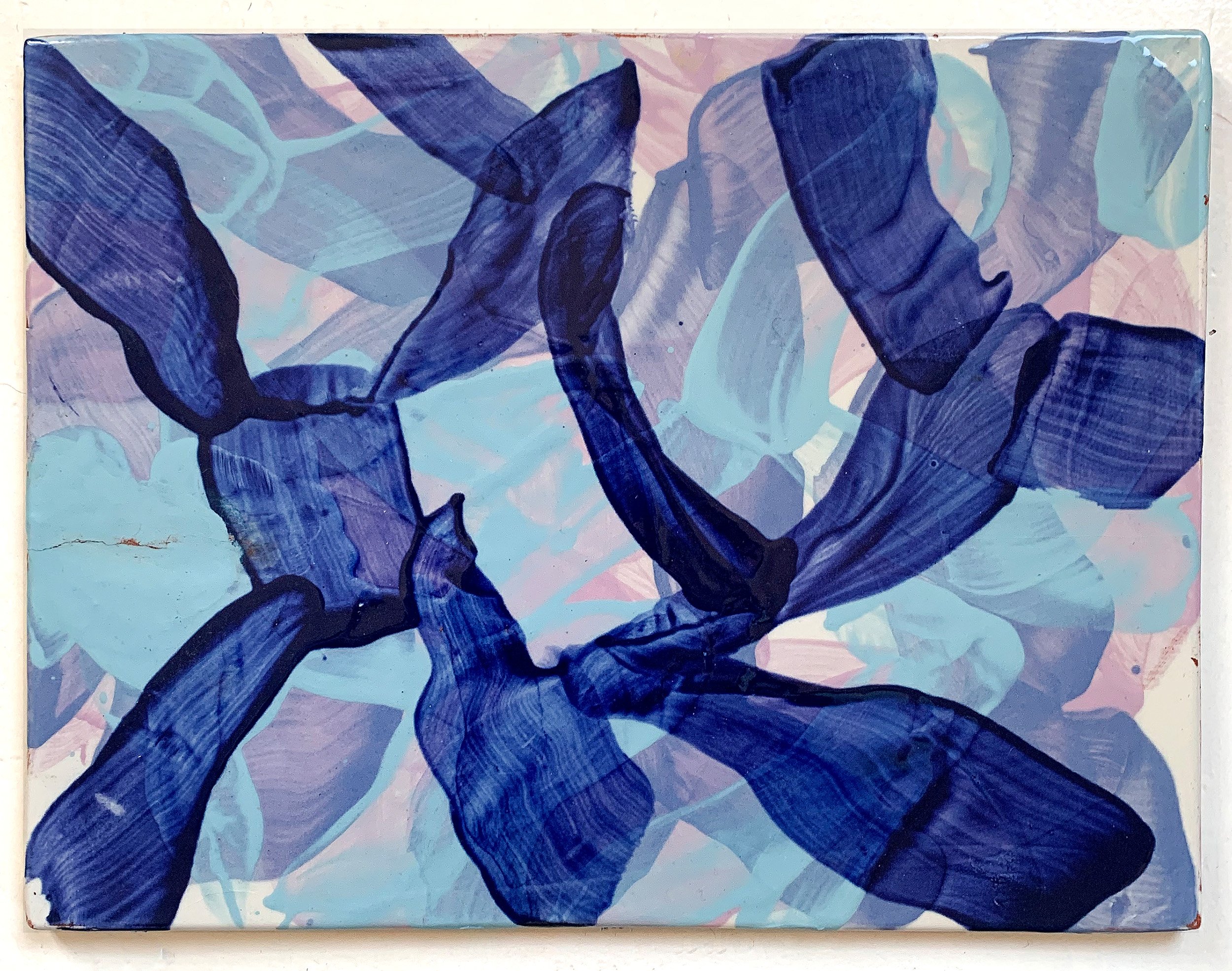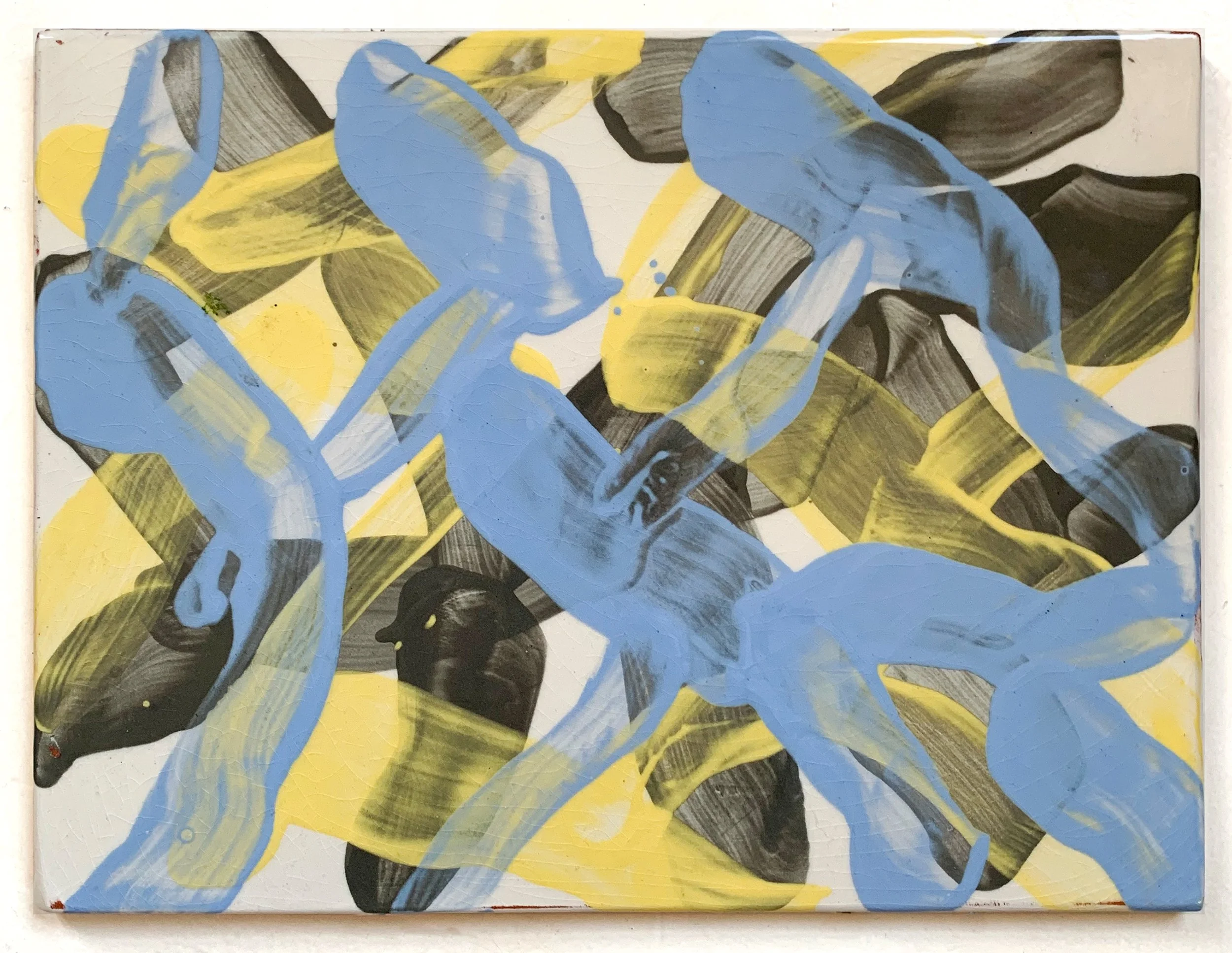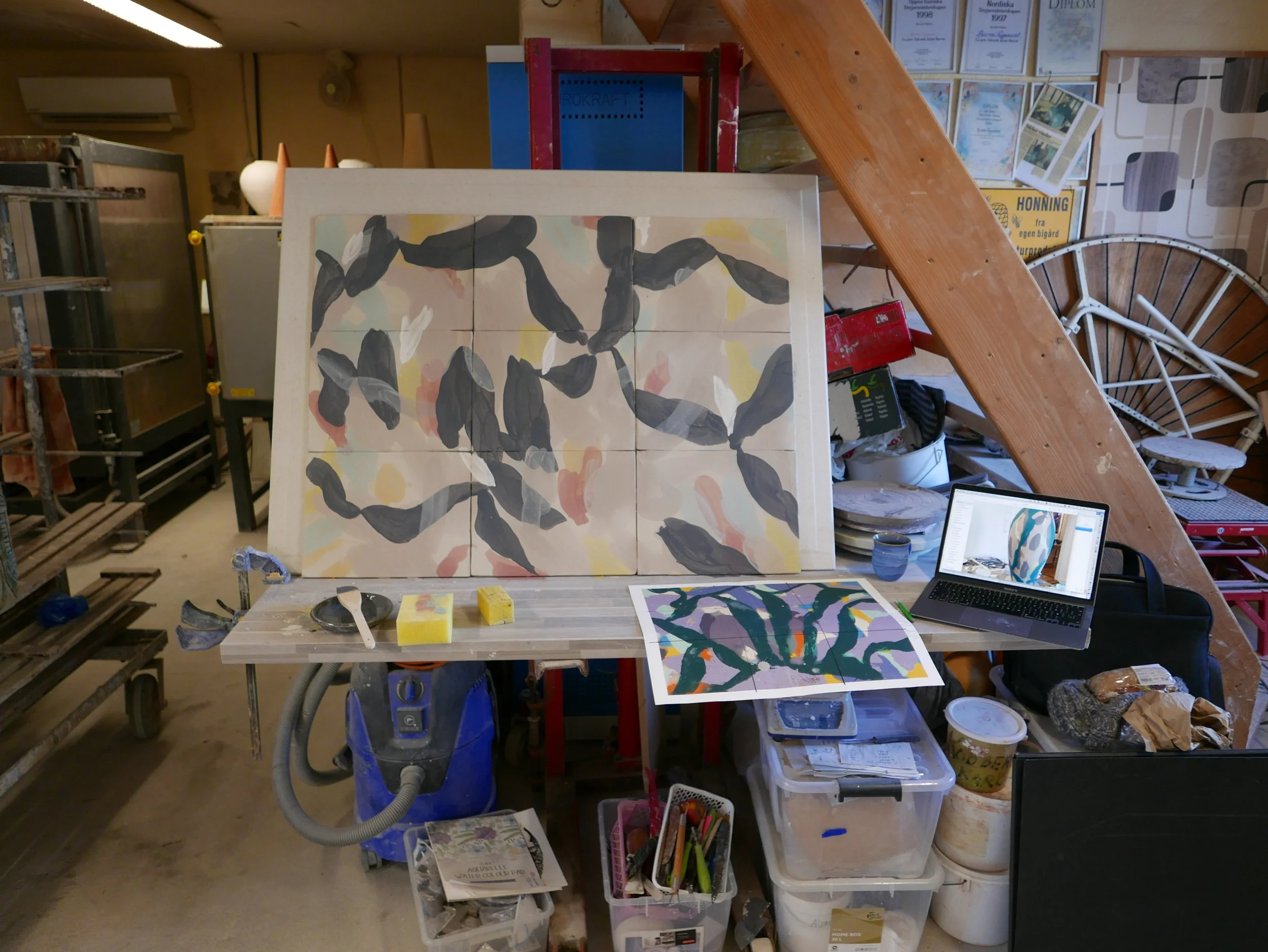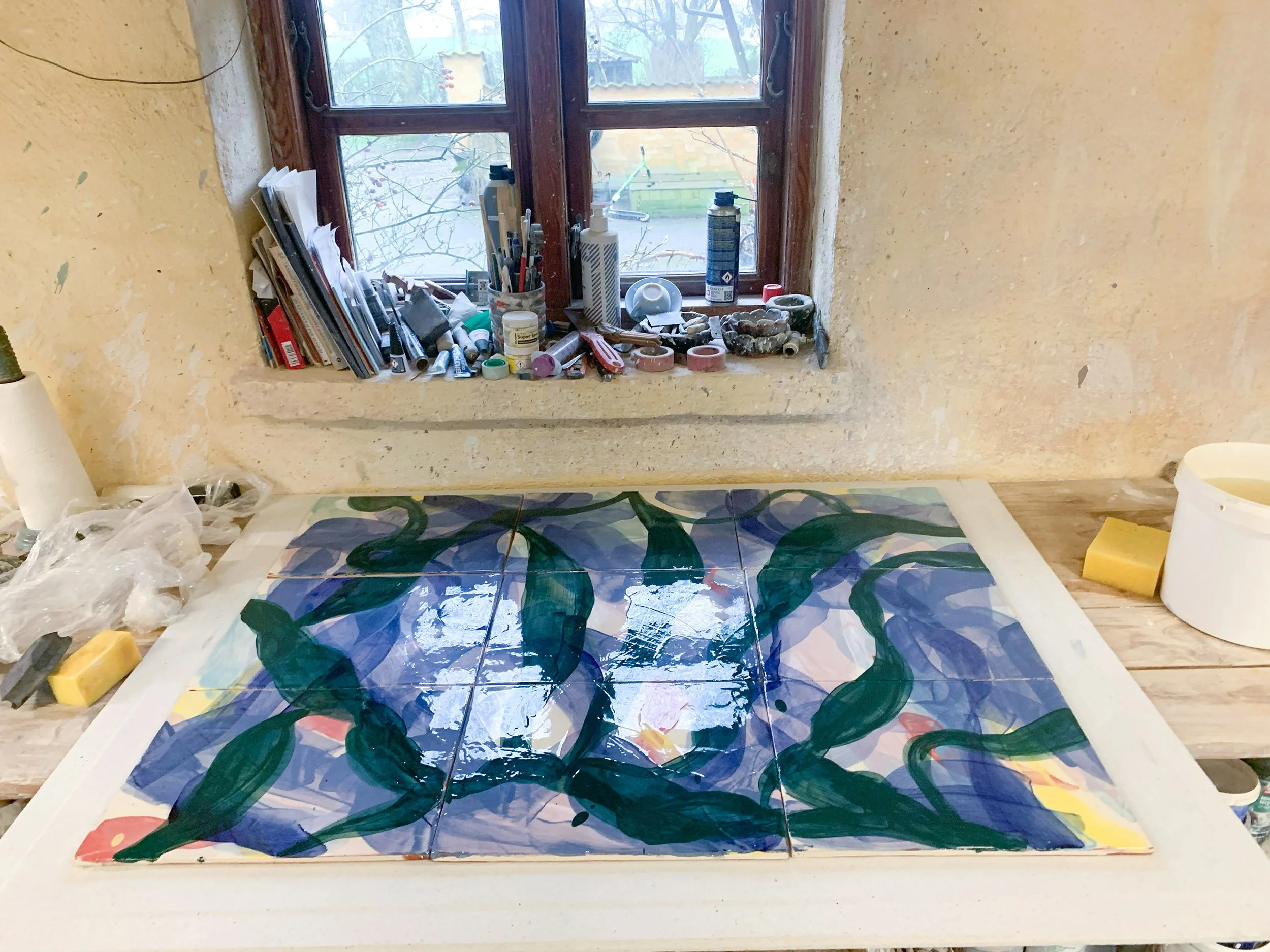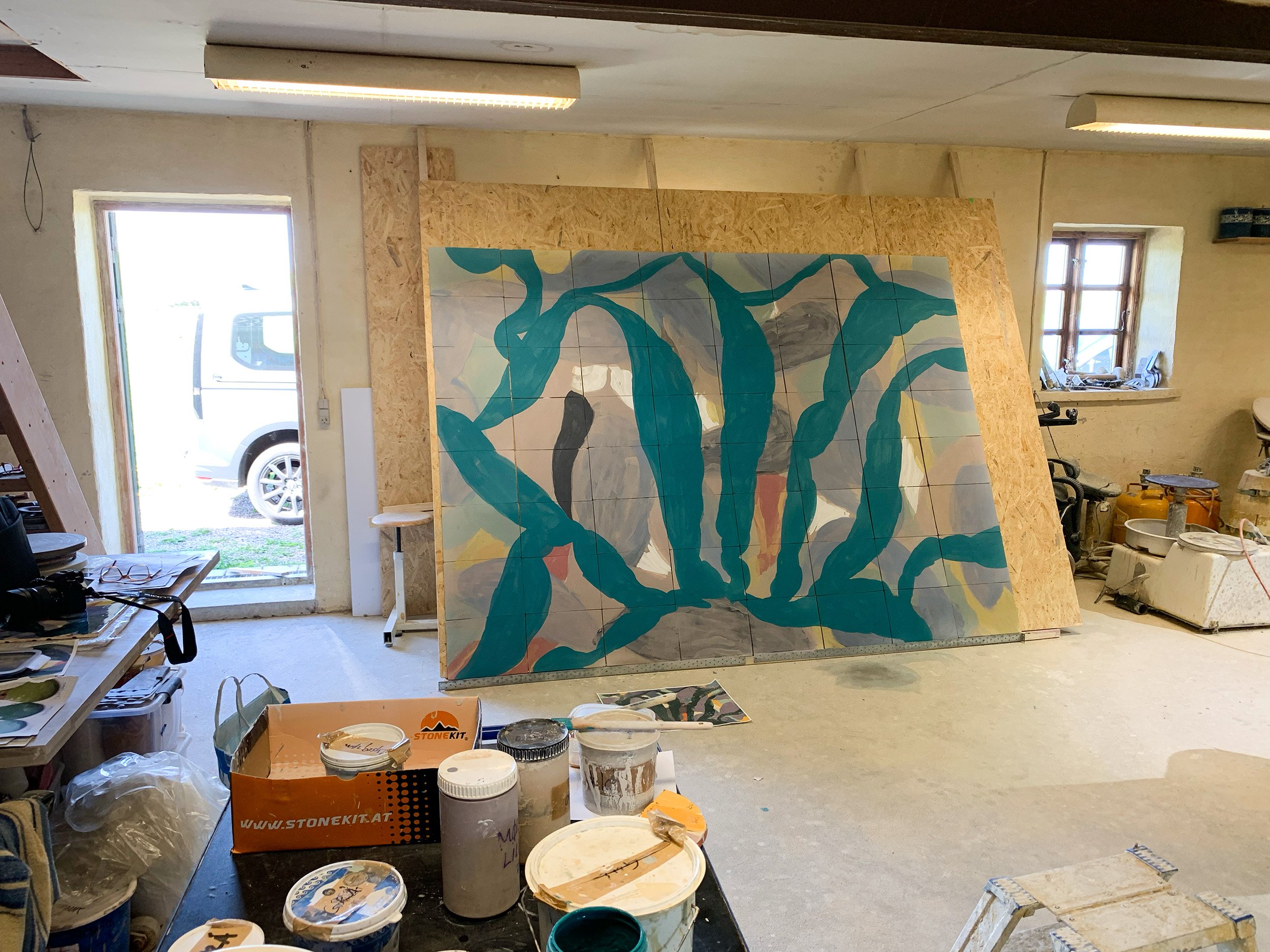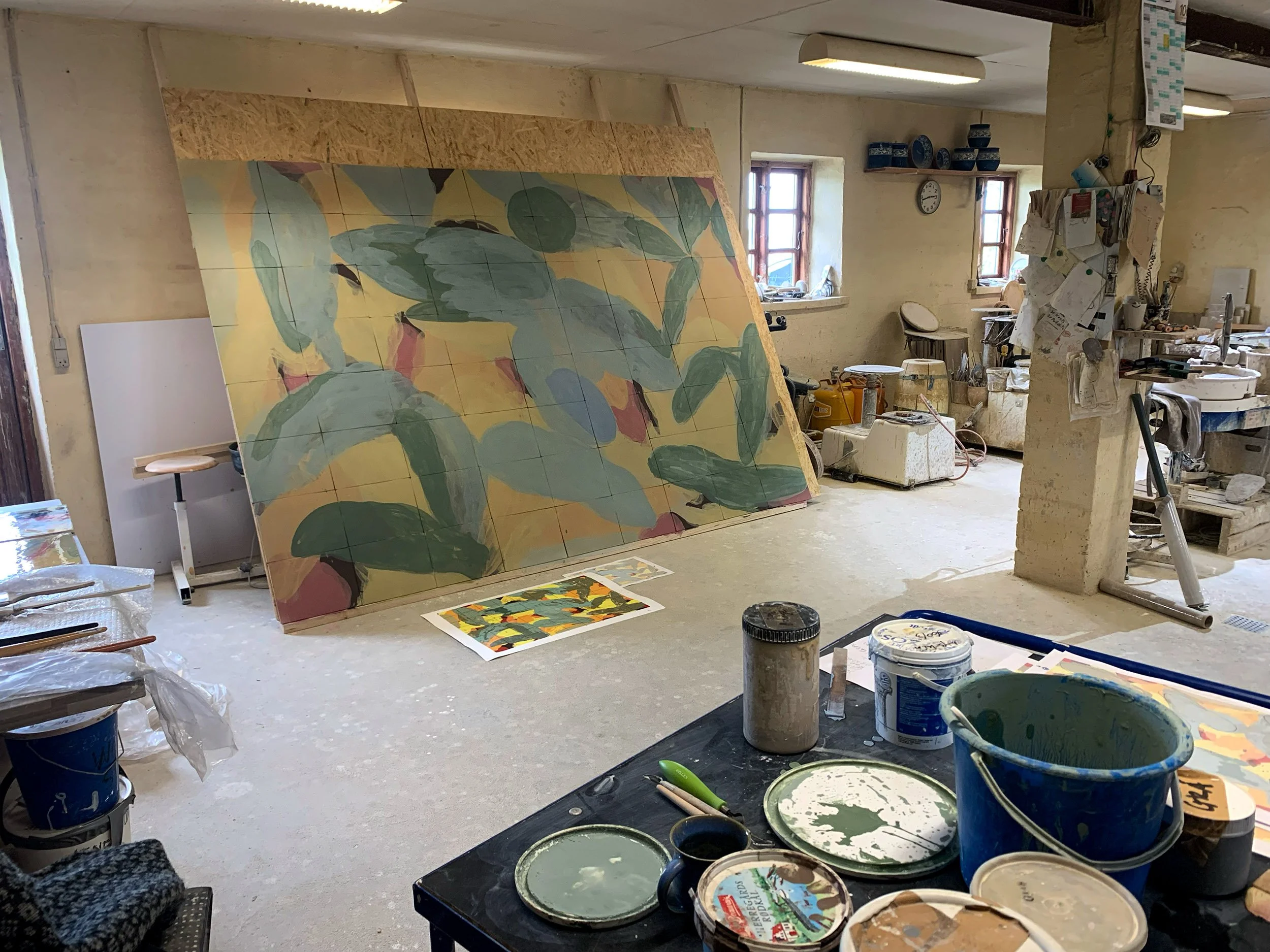Cycles & Transformation
Cycles & Transformation, Part 1
200 x 265 cm. 64 earthenware tiles painted and fired with glaze.
Cycles & Transformation, Part 2
200 x 265 cm. 64 earthenware tiles painted and fired with glaze.
SOLEN lyser SKYER driver VAND løber TRÆER vokser FUGLE flyver BLIKKET vandrer
SOLEN lyser SKYER driver VAND løber TRÆER vokser FUGLE flyver BLIKKET vandrer
CYCLES & TRANSFORMATION
is the common title and theme of two large ceramic paintings created for LYSHOLT. They are based on a proposal that won a competition for a commission for a brand new facility in Ikast-Brande Municipality, Denmark, which will open at the end of August 2023. The paintings, each approximately 2 x 3 meters in size, are made of earthenware tiles painted with pickling and fired with a glossy overglaze, and will be mounted on the walls of each of the two larger covered terraces in the building, as a two-part work designed site-specifically for the house, and literally integrated into the building with a significant and visible location.
LYSHOLT is a day care center with a special school and children's therapy that will accommodate 180 children aged 0-16. The building is designed with a single unifying roof that embraces all the activities of the building and the covered terraces. The covered areas and entrances help to give the building a dynamic and vibrant expression. All areas of the building must work together in a community where there is synergy and joy in living under the same roof and in the same building.
Construction: Ikast-Brande Municipality, /Gjørtz/Andersen/Architect, Pentabyg A/S / Ceramist: Bjarne Puggaard
Already at the first meeting in Ikast, in the spring of 2022, the first impulse was to work on a ceramic piece for the building.
In recent years, I have painted a number of ceramic pots with glazing: the Hornbæk Jar at Galleriet Hornbæk. This was new for me, and working with the pots gave me a new experience of painterly possibilities, which I have continued to use as a method in my painting.
Ceramics in this context consists more of the surface than of the form, which one otherwise associates with ceramics such as pots or reliefs. It is ceramic painting as a surface. However, the material has so much "body" that it also has sculptural properties, creating relief-like effects. Slip is a kind of sludge or mud containing metal oxides that are colored by firing.
The material also stands out from other materials in the house such as: linoleum floors, concrete ceilings, wood such as plywood panels and the door/window frames.
The material also blends easily with the other materials, so that it does not appear as a striking contrast, but rather supports a more organic expression in the building.
The material appears organic and shiny when treated with an overglaze, and the reflections cause the work to appear differently depending on the lighting and your position in relation to it. It is also a robust material that is not easily damaged. It also contributes to a long-lasting, high-quality aesthetic expression.
The ceramic painting can work in large format and can be clearly seen and felt from a distance. But it can also be viewed up close with fine details in the execution. Likewise, it can be physically touched without problems, which is a valuable feature in an institution with small children.
The ceramic painting can work in large format and can be clearly seen and felt from a distance. But it can also be viewed up close with fine details in the execution. Also, it can be physically touched without problems, which is a valuable feature in an institution with small children.
PLACING
Almost all of the walls inside the building are required acoustic panels/sound walls, so there is virtually no way to hang anything anywhere.
However, I did notice some prominent walls that are clearly visible from the inside as you move around the building. They are in the covered decks that are located in two places in the building. One at the entrance at the north end and one at the south end of the common room. These patios also have glass doors from the inside. For me, these areas are "focal points" for movement around the property.
Because of the window sections opposite the walls, these two walls are clearly visible from the inside and thus become an essential part of the interior. The terraces are located under the overall roof of the house and are therefore part of the house itself. The area also becomes a transition between the inside and the outside, and thus both, but visually directly addresses a view from the inside.
The artwork will mark this relationship and thus have several functions. If you see it from the inside, you are "invited" out, and if you see it in passing on your way into the building, you know that you are on your way in. Just as it can also give you the opportunity to stop, feel and reflect.
Floor plan of Lysholt with the location of the ceramic paintings marked in red.
Visualizing the Painting Placement - From the project presentation.
MOTIVE
From One Springs the Other
The images are based on compositions created as small oil paintings in the spring of 2022.
They are abstract paintings, but it is clear that they are related to nature. There is an organic expression throughout.
Organic forms meet, partly hide each other, collide, connect and tell something new. Movements in networks of organic patterns. In this way the images become a background for new thoughts. It challenges reading and reflection each time it is seen again.
There are repetitions and variations, as we see in nature, but also as we hear in music. There is a temporality at play that contributes to the sense of movement and change associated with nature and the body. In the paintings, the brushstrokes are still brushstrokes, so the body of the painting is still present in the finished work. A temporality that gives an experience of body, movement and change, just like the movement and constant change of nature.
The delimited surface of the painting plays an important role because it constitutes the space in which the work is done. But, paradoxically, the delimitation is also the limitlessness, because the individual image is connected to something else beyond the frame. In this case, the other image is located elsewhere in the building. In this way, each image becomes part of a larger context: connected and yet separate, but not alone.
The geometric but organic structure of the images has been given a little push, so that all the elements of the image appear slightly crooked and irregular. And when you look at the pictures, you wonder what you're actually seeing. It becomes impossible to maintain multiple perceptions at the same time. Either you see a figure or you see a background in the different layers of the composition.
For me, the background is linked to a lifetime of in-depth study and rendering of the lines, patterns and colors of the landscape, the shapes of the body and of nature. Together they form a repertoire of organic formal phenomena that are deposited in the hand's repeated appropriation of the lines, curves, meanderings, harmonies and disharmonies of the body and the landscape. It is a collection of basic forms that are repeated, combined and varied, and new forms and expressions emerge.
The balance between sign and image in an abstract painting is like a dynamic interaction between form and content. The use of organic forms and gestures conveys spontaneity and improvisation, while the use of geometric shapes and patterns adds structure and order to the composition.
All in all, the relationship between sign and image can be seen as a dialogue between the artist's intuition and the viewer's interpretation. An invitation to engage with the painting in a playful and open way.
